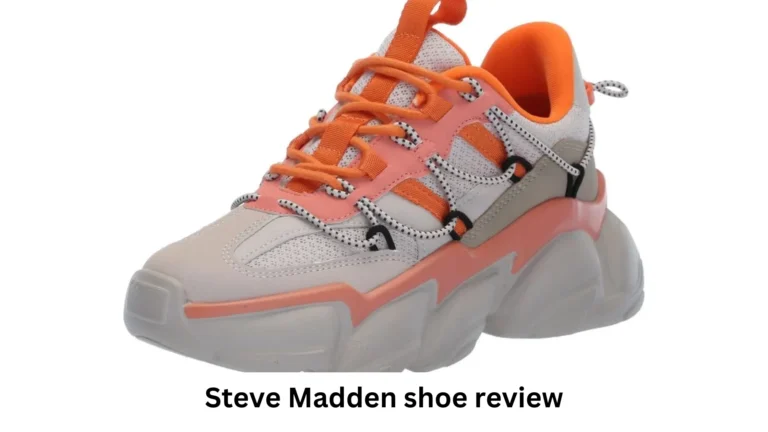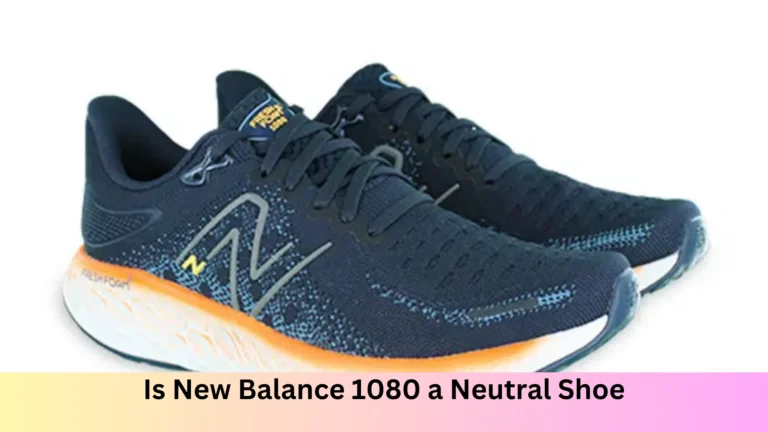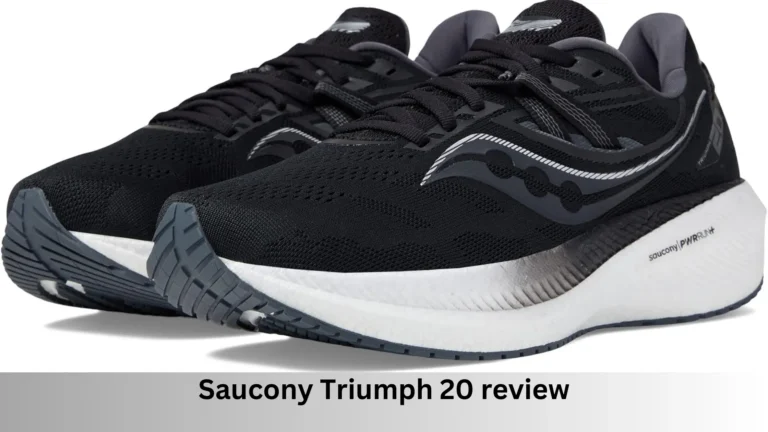
Plantar fasciitis is one of the most common causes of heel pain, often associated with inflammation in the band of tissue (the plantar fascia) that runs across the bottom of the foot. This condition is especially prevalent among runners, people with flat feet or high arches, and those who spend extended periods on their feet. Footwear plays a crucial role in either alleviating or exacerbating plantar fasciitis symptoms, so choosing shoes is critical for sufferers.
When it comes to selecting the right footwear for plantar fasciitis, two popular brands often come into consideration: Hoka and Asics. Both companies offer a wide range of shoes designed for runners and people who require extra cushioning and support. This article will compare these two footwear giants, focusing on their suitability for those dealing with plantar fasciitis.
Plantar Fasciitis
Before delving into which brand may be better, it’s important to understand the condition itself. Plantar fasciitis is characterized by pain in the heel and bottom of the foot, particularly upon waking up in the morning or after long periods of inactivity. The plantar fascia, a ligament that connects the heel bone to the toes, supports the arch of your foot. When this ligament becomes irritated or inflamed, it leads to sharp, stabbing pain, especially in the heel.

Key Factors in Footwear for Plantar Fasciitis
Certain factors are crucial when choosing shoes for plantar fasciitis:
- Arch Support: Ensuring proper arch support reduces strain on the plantar fascia.
- Cushioning: Adequate cushioning absorbs the shock of impact, reducing pressure on the heel.
- Stability: A stable shoe helps distribute weight evenly and keeps the foot in a neutral position.
- Heel Height: Shoes with a slight heel lift can relieve tension on the plantar fascia.
Now, let’s compare Hoka and Asics in these critical areas.
Hoka vs. Asics: Brand Overview
Hoka One One
Hoka One One is a brand known for its maximalist approach to cushioning. The company was founded in 2009 by two French athletes who wanted to create a shoe that offered both comfort and performance. Hoka shoes are characterized by their thick, cushioned soles, which provide excellent shock absorption and protection from impact.
Asics
Asics is a Japanese company that has been around since 1949, originally focusing on athletic footwear. The brand has a long history of creating technologically advanced running shoes designed to enhance performance while offering superior comfort. Asics shoes are popular among runners, walkers, and people dealing with foot conditions such as plantar fasciitis.
Key Technologies for Plantar Fasciitis
Both brands have developed specific technologies that cater to people suffering from plantar fasciitis. Here’s a look at the core technologies and features they offer:
Hoka One One Technologies
- Meta-Rocker: Hoka’s Meta-Rocker design is engineered to help promote a natural gait cycle. It’s designed to create a smooth transition from heel strike to toe-off, which can help reduce strain on the plantar fascia by promoting proper biomechanics.
- Cushioned Midsole: Hoka shoes are renowned for their plush cushioning. The thick, EVA foam midsoles are lightweight yet provide excellent shock absorption, which can help minimize the impact on the heel and arch of the foot.
- Active Foot Frame: This technology places the foot deep inside the midsole, rather than on top of it, which enhances stability and reduces pressure points that could aggravate plantar fasciitis.
Asics Technologies
- Gel Cushioning: Asics is well-known for its Gel cushioning technology, which is strategically placed in the rear and forefoot of the shoe to absorb shock and reduce pressure on the heel. This feature is particularly beneficial for people with plantar fasciitis, as it reduces heel impact.
- FlyteFoam: FlyteFoam is a lightweight cushioning material that provides a responsive ride while maintaining durability. It offers both comfort and support, making it ideal for those with plantar fasciitis.
- DuoMax Support System: This dual-density midsole system enhances stability and support, which is critical for maintaining proper foot alignment. Proper alignment can reduce the strain on the plantar fascia, making this feature valuable for sufferers.
Comparing Cushioning
Hoka Cushioning

Hoka’s shoes are often referred to as “marshmallow” shoes because of their ultra-thick cushioning. Their midsoles are made from lightweight EVA foam, which is not only soft but also provides excellent shock absorption. Hoka shoes tend to have a high stack height, meaning there’s a significant amount of material between your foot and the ground. This design helps reduce the pressure on your heel, making Hoka a popular choice among people with plantar fasciitis.
Asics Cushioning

While Asics shoes aren’t as heavily cushioned as Hoka’s, they still offer significant cushioning through their Gel technology. The Gel is placed in key areas, such as the heel and forefoot, to absorb shock where it’s needed most. For plantar fasciitis sufferers, this means less impact on the heel, which can alleviate pain. Additionally, Asics uses FlyteFoam, a lighter cushioning material that provides a balance between support and responsiveness.
Verdict: If you prioritize cushioning, Hoka may have the edge. However, Asics provides a more balanced approach to cushioning and responsiveness.
Support and Stability
Hoka Support
Hoka shoes are designed with a wider base, which naturally provides more stability. The Active Foot Frame further enhances this stability by cradling the foot within the midsole rather than having it rest on top. This design minimizes the likelihood of overpronation (excessive inward rolling of the foot) or supination (outward rolling), both of which can aggravate plantar fasciitis.
Hoka’s Meta-Rocker design also encourages a smoother gait, reducing the strain on the plantar fascia. However, some people may find the thick soles too unstable for activities requiring lateral movement, such as tennis or basketball.
Asics Support
Asics shoes, particularly models designed for overpronators, often include the DuoMax Support System. This feature provides extra support in the arch and helps keep the foot aligned properly, reducing strain on the plantar fascia. Asics also uses a Trusstic System, which is a lightweight support structure built into the sole to increase stability without adding extra weight.
The Gel-Kayano and GT series from Asics are especially recommended for those with plantar fasciitis due to their excellent arch support and stability features.
Verdict: Both brands offer excellent support for plantar fasciitis sufferers. Hoka’s wider base provides natural stability, while Asics offers more targeted support for those with specific foot alignment issues.
Durability
Hoka Durability
While Hoka shoes offer exceptional cushioning and comfort, some users report that the shoes may wear out faster than other brands, particularly in high-impact areas like the heel and forefoot. The thick cushioning, while comfortable, can compress over time, reducing its effectiveness. However, many users find the comfort and pain relief worth the trade-off.
Asics Durability
Asics shoes are generally considered more durable than Hoka, particularly in models that use their FlyteFoam technology. The Gel cushioning is also known for maintaining its structure over time, making Asics shoes a better choice for those who need a longer-lasting shoe. That said, durability can vary depending on how often the shoes are worn and the type of activity they are used for.
Verdict: If longevity is a top priority, Asics may offer better durability, although Hoka’s comfort may outweigh the need for extended use for some.
Weight and Flexibility
Hoka Weight and Flexibility
Hoka shoes are known for their maximal cushioning, which can make them heavier than other brands. However, the company has made strides in recent years to reduce the weight of its shoes without sacrificing cushioning. While Hoka shoes are not the lightest on the market, they are still manageable for most runners and walkers.
In terms of flexibility, Hoka shoes tend to be stiffer due to the thick midsole, which may not suit everyone, especially those looking for more natural foot movement.
Asics Weight and Flexibility
Asics shoes are generally lighter than Hoka, especially models like the Gel-Nimbus or Gel-Cumulus. Asics also offers more flexibility in their shoes, which can benefit those who prefer a more responsive shoe. However, this flexibility doesn’t come at the expense of support, as Asics shoes still provide excellent arch and heel support.
Verdict: If you’re looking for a lighter, more flexible shoe, Asics might be a better option. However, if cushioning is your primary concern, Hoka’s slightly heavier shoes may be worth the trade-off.
Popular Models for Plantar Fasciitis
Hoka Models
- Hoka Bondi: The Hoka Bondi series is one of the brand’s most cushioned models, offering a plush ride that’s perfect for plantar fasciitis sufferers. The thick midsole and Meta-Rocker design make it a top choice for those needing extra support and shock absorption.
- Hoka Clifton: The Clifton is another popular option from Hoka, offering a lighter, more responsive feel while still maintaining the brand’s signature cushioning. It’s a great option for those who want cushioning without the added weight of the Bondi.
Asics Models
- Asics Gel-Nimbus: The Gel-Nimbus is one of Asics’ most popular models for people with plantar fasciitis. It offers Gel cushioning in both the forefoot and rearfoot, as well as excellent arch support.
- Asics Gel-Kayano: The Gel-Kayano is designed for overpronators and offers exceptional support for those who need it. The DuoMax Support System and Gel cushioning make it ideal for plantar fasciitis sufferers who require extra stability.
- Asics GT-2000: A more budget-friendly option, the GT-2000 offers solid arch support and cushioning, making it a great choice for those with plantar fasciitis.
Pricing
Hoka Pricing
Hoka shoes tend to be on the higher end of the price spectrum due to their unique design and premium cushioning materials. Models like the Hoka Bondi and Clifton can range from $130 to $160, depending on the version and where they are purchased.
Asics Pricing
Asics shoes offer a broader price range. While high-end models like the Gel-Nimbus and Gel-Kayano are similarly priced to Hoka shoes (around $150), other models like the GT-2000 can be found for under $120. Asics offers more budget-friendly options without sacrificing quality.
Verdict: If budget is a concern, Asics offers more options across different price points. However, both brands are worth the investment for those seeking relief from plantar fasciitis.
Also Read: How Do I Find the Best Shoes for My Feet? A Comprehensive Guide
Conclusion: Which is Better for Plantar Fasciitis?
When it comes to choosing between Hoka and Asics for plantar fasciitis, the decision ultimately depends on your personal needs and preferences.
- Choose Hoka if you prioritize maximum cushioning and a plush, cloud-like feel underfoot. The Hoka Bondi and Clifton are excellent choices for plantar fasciitis sufferers who need relief from heel pain and want the most cushioned ride available.
- Choose Asics if you need a balance of cushioning, support, and durability. The Gel-Nimbus and Gel-Kayano provide excellent shock absorption and arch support, making them ideal for long-term relief from plantar fasciitis.
Both brands have their strengths, so the best way to determine which one works for you is to try them on and see which feels more comfortable. Everyone’s foot anatomy is different, and the right shoe for one person may not be the best for another. Regardless of your choice, both Hoka and Asics offer excellent options for people dealing with plantar fasciitis, ensuring that your feet stay comfortable and supported throughout the day.

Hello, I am Natasha Rose. I am the founder of the website Best Running Shoes. I am from California, USA. I am a professional shoe analyzer and an employee in a shoe showroom. I like to provide information about all types of shoes.





